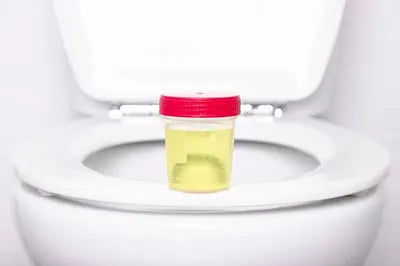Introduction
Seema had cared for many patients over the years, but that afternoon something unusual caught her eye. As she made her rounds, she noticed the urine bag hanging beside Mrs. Patel’s bed was not its usual golden yellow it was a deep, almost electric purple. Mrs. Patel, an elderly woman with a long term catheter, seemed completely unaware.
Seema’s curiosity turned to concern. That unexpected color was not just a strange sight it was a sign of a rare condition called Purple Urine Bag Syndrome, often linked to urinary tract infections in patients with long term catheters.
Purple Urine Bag Syndrome is a rare condition, causing the urinary catheter and bag to turn purple. While it is usually benign, PUBS is often a sign of an underlying urinary tract infection (UTI) and can indicate concerns for both patients and healthcare providers. This blog discusses everything about purple bag urine syndrome. So, let’s dive in!
What is Purple Urine Bag Syndrome?
Purple Urine Bag Syndrome (PUBS) is a condition in which the urine collection bag and tubes turn purple due to the presence of indigo and indirubin pigments produced by certain bacteria that accumulate tryptophan. This generally occurs in patients with long-term urinary catheters and underlying urinary tract infections (UTIs), particularly in the elderly, and is often related to constipation.
Though purple bag syndrome is harmless, it is essential to check patients for an underlying UTI, especially those individuals who may have trouble communicating their symptoms, such as those who are critically ill or have communication challenges.
Why Does the Urine Turn Purple?
Purple urine is primarily caused by bacterial infections in the urinary tract that produce enzymes. The enzymes break down tryptophan, a natural amino acid, into indigo and indirubin pigments, causing the urine to turn purple.
Let’s understand these in detail:
-
Urinary Tract Infections (UTIs): Certain bacteria, particularly those with sulphatase and phosphatase enzymes, metabolise indoxyl sulfate (formed from tryptophan) into indigo and indirubin pigments that are responsible for purple urine.
-
Tryptophan Metabolism: Tryptophan, a normal element of the diet, can be broken down by certain bacteria into indole. And, the liver converts indole into indoxyl sulfate, which is then expelled in the urine. Due to the presence of certain bacteria and alkaline urine, indoxyl sulfate is further metabolised into indigo and indirubin, resulting in the purple urine.
Who is Most at Risk?
Now, let’s understand the risk factors for purple bag syndrome:
-
Elderly Women: Purple Urine Bag Syndrome is usually seen in elderly women, with an average age of about 79 years.
-
Long-term Catheterisation: Catheterisation, especially for longer periods, significantly increases the risk of PUBS.
-
Constipation: Chronic constipation is a major risk factor for PUBS, as it allows bacteria to build up and metabolise tryptophan into pigments, causing purple urine.
-
Alkaline Urine: Alkaline urine pH can help convert indoxyl sulfate into indigo, the pigment that leads to the purple colour of urine.
-
Increased Dietary Tryptophan: A tryptophan-rich diet, a protein found in foods, can lead to increased formation of indoles, which are then converted into pigments by bacteria, resulting in coloured urine.
-
Urinary Tract Infections (UTIs): UTIs, particularly those caused by certain bacteria that produce indoxyl sulfatase or phosphatase enzymes, are often linked to PUBS.
-
Bedridden or Institutionalised Patients: Bedridden or institutionalised patients are often associated with PUBS due to increased risk factors, like constipation and UTIs.
-
Chronic Kidney Disease (CKD): Patients with chronic kidney disease are more prone to PUBS. This is due to several factors, including changes in urine composition or increased risk of UTIs.
-
Other Factors: Other factors, like dehydration, azotemia (high levels of nitrogen in the blood), and certain medications, can increase the risk of developing PUBS.
Treatment and Management
Purple Urine Bag Syndrome is usually managed by some common treatment options and preventive measures.
-
Urinary Catheter and Bag Replacement: Changing the urinary catheter and bag is a primary component to manage PUBS.
-
Treating Underlying UTI: To treat an underlying UTI, antibiotics are prescribed to target the bacteria causing the infection.
-
Addressing Constipation: Certain medications, like laxatives, can be prescribed to address constipation, contributing to the PUBS condition.
-
Preventative Measures:
-
Shorten Catheter Duration: Minimising the catheter duration can significantly reduce the risk of infection.
-
Regular Catheter Changes: Regularly changing the urinary catheter helps prevent infection and reduce the development of PUBS.
-
Maintain Good Hygiene: Maintaining good hygiene is essential to prevent UTIs, which can cause PUBS condition.
-
Monitoring and Follow-up: It is crucial to monitor patients for any signs of underlying UTIs or other complications.
Conclusion
While concerning in appearance, Purple Urine Bag Syndrome (PUBS) is a benign and rare indicator of urinary tract infections (UTIs). The purple urine is due to bacterial breakdown of tryptophan, producing indigo and indirubin pigments that are excreted in the urine bag. Purple bag syndrome is associated with high-risk patients, such as elderly females, constipation, chronic catheterisation, chronic kidney disease, alkaline urine, and other factors, like dehydration and certain medications.
Though the sight can be alarming, PUBS itself is not harmful. With timely identification and appropriate treatment of the underlying infection, the condition usually resolves without complications. Awareness among caregivers can go a long way in ensuring early action and peace of mind.
Product Recommendations
FAQs
Q1. What causes the purple colour in urine bags?
Ans. The purple urine is a condition called Purple Urine Bag Syndrome (PUBS). It is generally caused by the breakdown of tryptophan into indigo and indirubin, which are then excreted in the urine, resulting in the purple colour in the urinary catheter and bag.
Q2. Can urine naturally turn purple without a catheter?
Ans. Although it is rare, urine can naturally turn purple, even without a catheter. This syndrome is an indicator of a urinary tract infection (UTI) where certain bacteria convert tryptophan, an amino acid, into indigo and indirubin pigments, causing the purple colour.
Q3. Which bacteria are responsible for PUBS?
Ans. Purple Urine Bag Syndrome (PUBS) is typically caused by various gram-negative bacteria, particularly those producing sulfatase and phosphatase enzymes, which can accumulate proteins in the urine, leading to the purple stain.
Q4. Is PUBS painful or symptomatic?
Ans. Purple Urine Bag Syndrome (PUBS) is generally considered asymptomatic, which means individuals with PUBS usually don't report any pain. The most notable symptom is the purple stain in the urine bag and tube.
Q5. Why is PUBS more common in women?
Ans. Purple bag syndrome is more common in women than men. This is because women have a shorter urethra than men, making them more prone to UTIs, which are a key risk factor for PUBS.





















